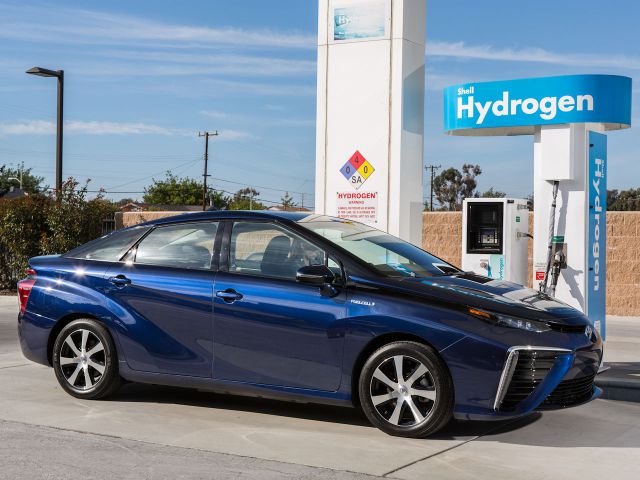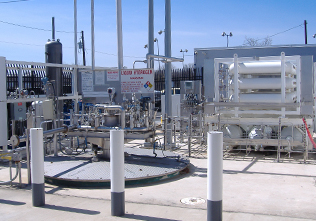Toyota has been working on developing a great fuel-cell technology for almost as long as I’ve been alive. The company began experimenting with alternatively fueled vehicles in 1992, and the first product to emerge was the hybrid gas-and-electric-fueled Prius in 1997. But it wasn’t until late 2014 that Toyota unveiled what it sees as the next step in the future of sustainable mobility: The hydrogen-fueled Toyota Mirai.
Toyota — along with Hyundai, which began distributing its hydrogen-fueled Tucson in 2014, and Honda — is leading the auto industry into this uncharted territory. But being ahead of the curve means the companies have to front the costs of developing a network of hydrogen fuel stations from scratch. And it’s not a case where the revenue from sales can cover overhead, because Toyota — and Hyundai, for that matter — can only sell as many hydrogen-fueled cars as the fueling infrastructure can support.
To date, Toyota has distributed only 100 of the 300 Mirais preordered in California for precisely that reason. Building out fueling stations is expensive and time-consuming. According to Toyota’s national manager of fuel cell vehicles, Ed La Rocque, who walked me through the mechanics of the technology at the New York International Auto Show on Wednesday, it costs $1 million to set up a single station. In California, after issuing a $7.3 million loan to retail hydrogen-fueling company First Element, Toyota has helped build out 14 stations so far.
To top it off, Toyota is subsidizing some of the costs of purchasing and operating the vehicle in many cases. For the first three years, for instance, Mirai owners get to refuel their vehicles for free. While the suggested retail price of the car is $57,500, leasing costs just $499 a month. A customer who chooses to buy the vehicle is entitled to up to $13,000 in both federal and state subsidies, according to La Rocque.
The next step is building out 12 hydrogen fuel stations in New York, New Jersey, Massachusetts, Connecticut and Rhode Island over the next two years. For this network of Northeastern fuel stations, Toyota is collaborating with hydrogen and fueling provider Air Liquide.
With the expanded infrastructure, Toyota is aiming to sell 3,000 units by the end of 2017.
The chicken-and-egg situation is similar to that faced by companies like Tesla, Nissan and now Chevy in distributing fully electric vehicles. It’s an endless balancing act where carmakers can expect to lose money on the sale of each vehicle for some time before the revenue covers the cost of overhead.
But in the case of many electric vehicles, customers have the option of charging their cars in the comfort of their own homes. And local agencies and private companies have been erecting electric vehicle charging stations since 2012. For hydrogen-based fueling stations, the onus to build out or encourage the development of a network is on the pioneering automakers.
Still, La Rocque says Toyota expects to see significant market acceptability in the next few years primarily because hydrogen vehicles are more fuel efficient than electric vehicles.
The Mirai has a fuel range that closely matches that of a hybrid or gas-fueled vehicle and is nearly double that of an electric vehicle. The Mirai can go about 300 miles without refueling, and there are zero emissions. In fact, the only by-product is water that is clean enough to drink, at least according to the driver who accompanied me on my test drive of the Mirai. (The driver, Burt, was willing to demonstrate how drinkable it was, but neither of us had a cup on hand.)
By all other measures, the Mirai is what you would imagine a hydrogen-powered Toyota to be. It’s quiet, it has regenerative braking and — with the exception of the grill, which consists of two “vents” on either side to facilitate oxygen intake — is easily recognizable as a Toyota. It costs between $40 and $50 to refuel the car, but only takes three to five minutes to do so.
“We call them trailblazers,” La Rocque said of the first few Mirai customers. “They want the newest in technology, but they care about the environment.”
Source: Recode.net








